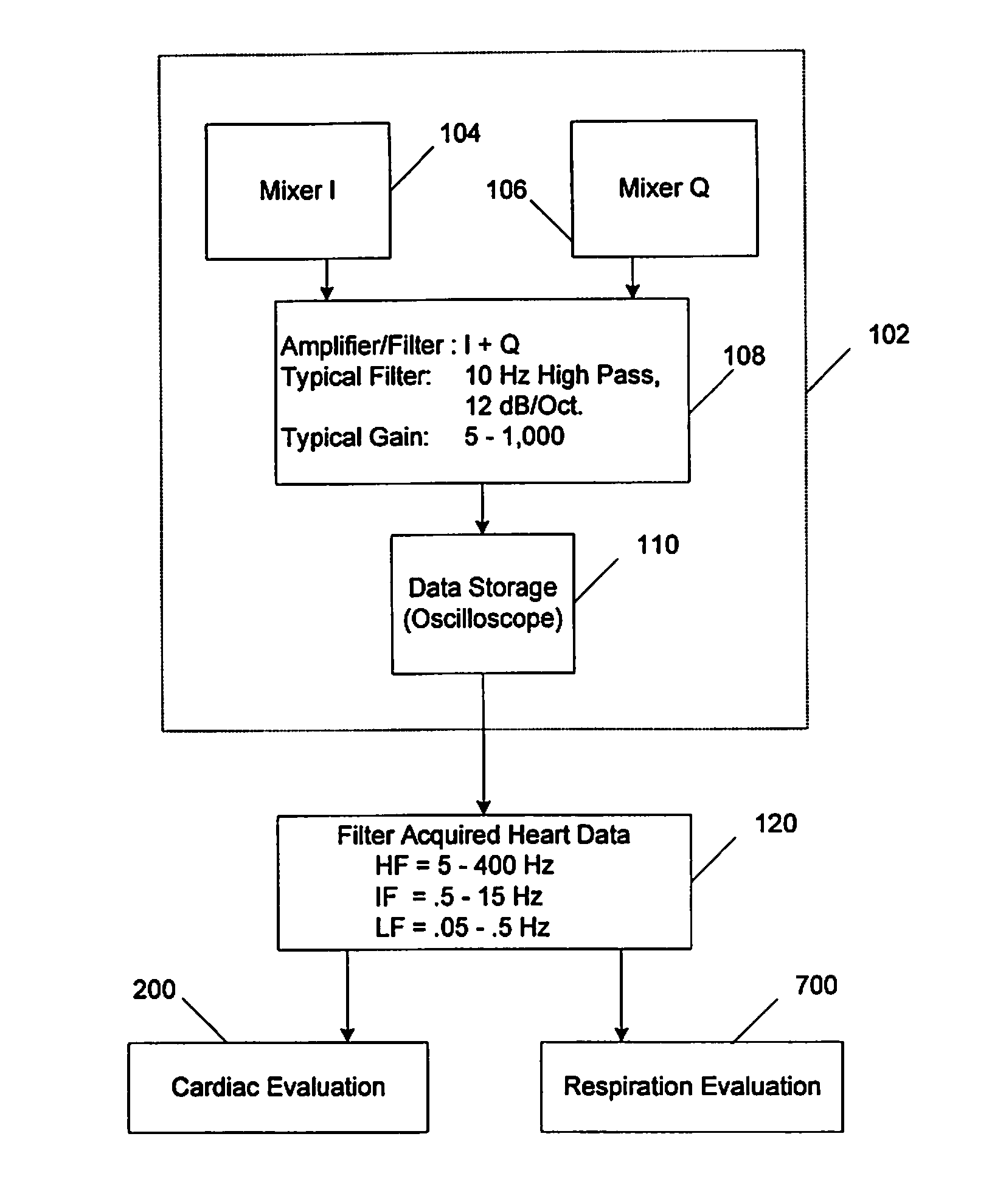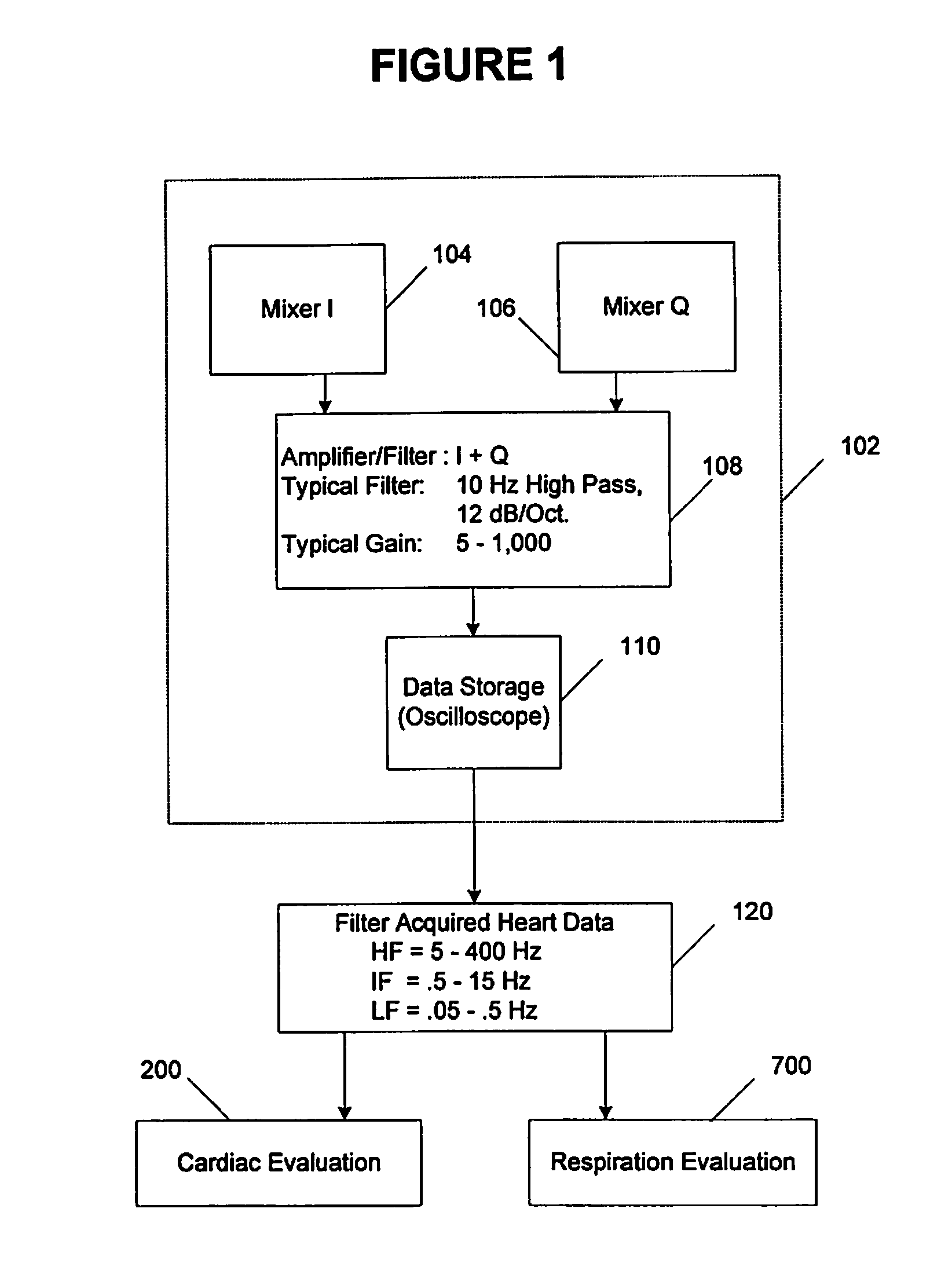Methods for Non-Invasively Monitoring Health
a non-invasive monitoring and health technology, applied in the field of non-invasive monitoring health, can solve the problems of not providing evidence for a meaningful evaluation of variability other than ecg, and the conventional analysis method has proved difficult to interpret under a variety of conditions, so as to improve the reliability of individual measurements and simplify the interpretation of variability data.
- Summary
- Abstract
- Description
- Claims
- Application Information
AI Technical Summary
Benefits of technology
Problems solved by technology
Method used
Image
Examples
Embodiment Construction
[0019]FIG. 1 is a block diagram of the present invention grouped by function. There are three primary functions involved with the present invention. The first function is a data gathering function 102. This function involves sensors and physical equipment not necessarily in contact with a subject for the purpose of acquiring heart vibration data. The current sensor is a CW Doppler radar (homodyne) operating between 24.12 and 24.13 GHz (K band). An output power of about 5 mW was used to feed a planar array microwave antenna. While the present invention can implement numerous antenna array configurations like a pyramidal horn or planar array antennas, the planar array allows for a more convenient sensor package. The power output from the antenna is directed approximately normal to the skin surface being probed through an air or other dielectric spacer (typically between 1 and 10 mm) and through clothing. The clothing can even include soft body armor. Compression of the antenna face ag...
PUM
 Login to View More
Login to View More Abstract
Description
Claims
Application Information
 Login to View More
Login to View More - R&D
- Intellectual Property
- Life Sciences
- Materials
- Tech Scout
- Unparalleled Data Quality
- Higher Quality Content
- 60% Fewer Hallucinations
Browse by: Latest US Patents, China's latest patents, Technical Efficacy Thesaurus, Application Domain, Technology Topic, Popular Technical Reports.
© 2025 PatSnap. All rights reserved.Legal|Privacy policy|Modern Slavery Act Transparency Statement|Sitemap|About US| Contact US: help@patsnap.com



